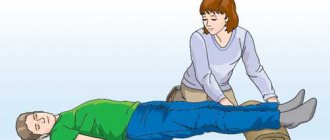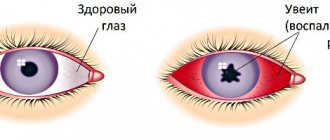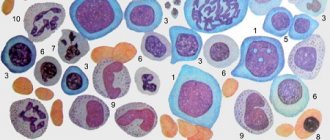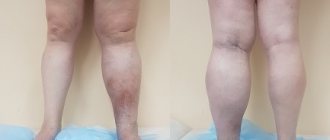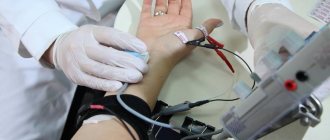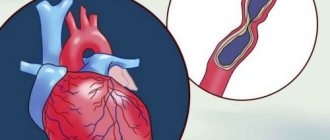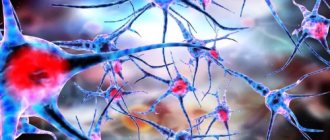Amyotrophic lateral sclerosis
Amyotrophic lateral sclerosis is a disease characterized by damage and death of cells in the brain and spinal cord that are responsible for muscle movements. As a result, muscle weakness and paralysis (lack of movement) develop. Manifestations of the disease gradually increase. Patients lose the ability to move independently, the activity of the muscles that are necessary for breathing is disrupted, which leads to the death of patients.
The causes of the disease are not fully understood. There are several factors that, according to researchers, influence the occurrence of the disease. These include genetic mutations (changes in the genetic material), an imbalance of certain chemicals in the nervous system, disturbances in the immune system (the system that protects the body from various infections) and others.
The disease is incurable. Taking medications can slow down the development of amyotrophic lateral sclerosis.
Symptoms
The main manifestations of amyotrophic sclerosis in the early stages include:
- weakness in the muscles of the arms or legs - a decrease in muscle strength can begin with the foot, hand, fingers, and then spread to other muscles of the limbs and torso;
- slurred speech;
- nasal sound of speech;
- difficulty swallowing food;
- twitching in the muscles of the arms, legs, tongue.
Over time, muscle weakness increases, which leads to paralysis (complete lack of movement).
In later stages of the disease, the following manifestations occur:
- loss of ability to stand, walk;
- lack of movement in the arms and legs;
- loss of ability to chew and swallow food;
- severe speech difficulties;
- loss of ability to breathe independently.
General information about the disease
Amyotrophic lateral sclerosis is a disease in which the death of nerve cells (neurons) that send nerve impulses to a person’s muscles occurs. These nerve cells are called motor neurons. They have complex connections with other types of brain cells. Information from the motor neurons of the brain travels along special nerve pathways to the motor neurons of the spinal cord, from where impulses travel along nerve fibers to the muscles, causing them to contract. In this case, movement occurs (for example, with an arm or leg).
With amyotrophic lateral sclerosis, this particular type of nerve cells is damaged. As a result, the muscles stop receiving nerve impulses from the brain. Movements become impossible. At the onset of the disease, smaller muscles of the hands and feet may be affected. Then weakness and immobility spreads to other muscles of the limbs and torso.
Damage to the nerve cells that control the muscles involved in swallowing, chewing, pronouncing words, and breathing leads to disruption of these functions.
The causes of the disease are not fully understood. There are several factors that can cause the disease:
- Genetic mutations - various changes in the genetic material can lead to the occurrence of a disease. Genetic mutations can be inherited, causing the disease in subsequent generations.
- Increased levels of glutamate in the nervous system - with amyotrophic lateral sclerosis, an increased content of this chemical is found. Glutamate is normally required for contact between certain nerve cells. Excess glutamate damages some nerve cells.
- Disturbances in the functioning of the immune system. The immune system of a healthy person destroys various pathogens and foreign cells that enter the body. In some cases, the immune system begins to fight the cells of its own body, mistaking them for foreign ones. The resulting damage to nerve cells can lead to disease.
- Accumulation of altered proteins in nerve cells – with amyotrophic lateral sclerosis, certain altered proteins are deposited and accumulated in nerve cells. This can lead to the death of nerve cells.
As the disease progresses, the following complications may occur:
- Respiratory disorders – the disease causes paralysis (immobility) of the respiratory muscles. One of the most common causes of death in patients with amyotrophic lateral sclerosis is respiratory failure. It develops 3-5 years after the appearance of the first symptoms of the disease.
- Difficulty in eating - dysfunction of the muscles that are involved in swallowing and chewing leads to difficulty in taking food and liquids. Such patients have an increased risk of food and liquid entering the lungs. This can lead to the development of pneumonia.
- Dementia (dementia) - despite the fact that this disease affects motor neurons (which control human movements), some patients may experience problems with decision making and memory loss.
Who is at risk?
- Persons who have close relatives who suffer from amyotrophic lateral sclerosis;
- persons aged 40-60 years;
- men – the disease occurs more often in men than in women;
- smokers – the risk of developing the disease in smokers is twice as high as in non-smokers;
- people exposed to lead – some evidence suggests that illness may occur in people exposed to lead in the workplace.
Diagnostics
Diagnosis of amyotrophic lateral sclerosis is quite difficult, since it is necessary to exclude diseases that can cause similar symptoms. These include damage to the nervous system associated with exposure to heavy metals (for example, lead), some infectious diseases and others.
Laboratory diagnostics plays an important role. Tests are carried out that reflect the general condition of the patient’s blood, indicators of liver and kidney activity. If deviations from the norm are detected, additional research may be required.
- General blood analysis. Allows you to determine basic blood parameters: the number of red blood cells, hemoglobin, leukocytes, platelets. An increase in the number of leukocytes is observed in various inflammatory processes.
- Total protein in whey. A certain level of protein is required for normal functioning of the body. Proteins perform important functions: they transport various substances in the body, ensure fluid retention in the bloodstream (colloid-osmotic balance), and are an important component of various body structures. Amyotrophic lateral sclerosis causes difficulty eating. As a result, the level of total protein in the blood may be reduced.
- Alanine aminotransferase (ALT). An enzyme that is found in large quantities in liver cells. When liver cells are destroyed, the concentration of alanine aminotransferase in the blood increases. This analysis shows the severity of liver damage.
- Serum creatinine. Creatinine is formed in muscles during various energy processes and is then released into the blood. Excreted from the body by the kidneys. In various conditions that are accompanied by impaired renal function, the concentration of creatinine increases. The indicator is important for assessing kidney function.
- Urea in serum. Urea is the end product of protein metabolism in the body. Excreted from the body by the kidneys. When the kidneys are damaged or their function is impaired, the level of urea increases.
Depending on the clinical situation, the following tests may be required:
- Determination of the concentration of heavy metals in the blood. Exposure to heavy metals in the human body can cause damage to the nervous system. However, some manifestations may be similar to those of amyotrophic lateral sclerosis (for example, when exposed to lead).
- Determination of the presence of heavy metals in urine. Heavy metals can cause damage to the nervous system (eg lead, aluminum).
- Determination of antibodies to pathogens of infectious diseases. Antibodies are protein particles that are produced by the body's immune system in response to infection entering the human body. Some infectious diseases (such as syphilis) can cause damage to the nervous system.
Research:
- Electromyography. This method allows you to evaluate the electrical impulses that travel along the nerves to the muscles. To do this, special electrodes are applied to the muscle being studied. The study is performed in a calm state and during muscle contraction.
- Magnetic resonance imaging (MRI). A diagnostic method based on the effect of a magnetic field on the human body. After processing the received signals, layer-by-layer images of the internal structures of the body are obtained. Allows you to exclude the presence of space-occupying formations (for example, tumors) of the brain and spinal cord.
Additional research:
- Muscle biopsy. It can be performed if there is a suspicion of a disease that affects muscles rather than nerve cells, as in amyotrophic lateral sclerosis. To do this, a small piece of muscle is taken, which is then examined in the laboratory.
Treatment
There are no treatment methods to achieve complete recovery. Treatment is aimed at slowing the progression of the disease. Drugs are used that reduce glutamate levels in the brain. Glutamate is a chemical in the brain whose levels are significantly elevated during illness.
Medicines are also prescribed to eliminate individual symptoms of the disease (for example, weakness, muscle twitching, constipation).
Physical therapy is of great importance. Performing exercises to train the muscles of the arms, legs, and torso helps maintain movements for as long as possible. Special speech exercises help make the pronunciation of words and sounds more intelligible and understandable to others.
Patients with amyotrophic lateral sclerosis require various rehabilitation devices (canes, walkers, wheelchairs and other devices).
Prevention
There is no specific prevention for amyotrophic lateral sclerosis.
Recommended tests
- Complete blood count (without leukocyte formula and ESR)
- Total protein in whey
- Alanine aminotransferase (ALT)
- Serum creatinine
- Urea in serum
- Treponema pallidum, antibodies
- Lead in the blood
- Lead in urine
Literature
- https://www.mayoclinic.com/health/amyotrophic-lateral-sclerosis/DS00359
- https://als.emedtv.com/amyotrophic-lateral-sclerosis/amyotrophic-lateral-sclerosis.html
- https://emedicine.medscape.com/article/1170097-overview
- Anthony S. Fauci, Dennis L. Kasper, Harrison's principles of internal medicine (16th ed.). New York: McGraw-Hill Medical Publishing Division, 2005.
- Motor neuron diseases, including amyotrophic lateral sclerosis. Chapter 170.
Clinical forms
Depending on the level of damage to the central nervous system, neurologists distinguish the following types of ALS:
- Bulbar;
- Cervical;
- Chest;
- Lumbar;
- Diffuse;
- Respiratory (diaphragmatic).
Doctors also distinguish between the classic form of ALS, progressive bulbar palsy, primary lateral sclerosis, progressive muscular atrophy, and ALS-parkinsonism-dementia. According to the frequency of occurrence, there are sporadic (single) and familial amyotrophic lateral sclerosis.
How does it manifest itself?
The most common problems for this type of disease are:
Development of asymmetric paraparesis.- High degree of motor activity and reflex abilities.
- Damage to the lower zones.
- The occurrence of bulbar and pseudobulbar deformities.
- The level of working capacity decreases.
- Rapid weight loss.
- Shortness of breath appears.
- Muscle hypertonicity.
- Decay of tendon options.
- Paralysis.
Forecast
The prognosis for the recovery of patients suffering from amyotrophic lateral sclerosis is pessimistic. Treatment of the disease is aimed at improving the quality and increasing the patient’s life expectancy. The only drug that affects the mechanism of development of the disease is not imported into the Russian Federation. The most unfavorable prognosis is for high and bulbar forms of amyotrophic lateral sclerosis.
Care and palliative therapy for patients suffering from ALS are provided at the neurology clinic and hospice of the Yusupov Hospital. Doctors in the intensive care unit use modern equipment to support the patient’s vital functions. To get complete information about the disease, the cost of treatment, and to make an appointment with a neurologist, call the contact center phone number. It works 24 hours a day without days off and lunch breaks.
Make an appointment
Symptoms
Early symptoms of ALS include:
- Difficulty lifting the forefoot and toes (foot drop)
- Muscle weakness in the leg, foot, or ankle
- Weakness in the arms and impaired fine motor skills of the hands
- Speech problems or swallowing problems
- Muscle cramps and twitching (fibrillations) in the arms, shoulders and tongue
The disease often begins in the arms, legs, or limbs and then spreads to other parts of the body. With the onset of the disease, symptoms begin to progress, the muscles become weaker and then paralysis occurs. Ultimately, there is a violation of the acts of chewing, swallowing and breathing.
How to improve the patient's quality of life
If patients with amyotrophic lateral sclerosis have problems chewing and swallowing food, they should prepare liquid and ground meals. Soups and porridges can be blended with a blender. When a patient loses the ability to swallow food on his own, surgeons at the Yusupov Hospital perform gastrostomy surgery. After this, food is introduced directly into the stomach through a tube inserted through a stoma in the anterior abdominal wall. In some cases, parenteral nutrition is carried out - mixtures that contain all the necessary ingredients are administered intravenously.
If speech is impaired, ALS patients lose the ability to speak. In this case, they can communicate with others using a printing device. Also for this purpose, systems with automatic sensors located on the eyeballs are used.
If the patient loses the ability to move independently, they resort to orthopedic devices, use special shoes, canes and strollers. The head is fixed with a special holder. As the disease progresses, the patient should be provided with a functional bed.
Treatment
ALS therapy is ineffective in many cases. The goal of treatment is to slow the progression of the symptoms of the disease, increase the period during which the patient will be able to care for himself independently and will retain vital functions.
The only drug that is approved by the FDA (American Federal Administration for Supervision of Food and Drugs) is Rilutek, but it is not registered in the Russian Federation. Rilutek slows down the action of glutamate in brain cells, thereby improving the functioning of superoxide dismutase-1. The drug is prescribed to patients for life. Every three months, doctors monitor the level of liver transaminases. To prevent the death and improve the growth of nerve cells, patients with amyotrophic lateral sclerosis undergo stem cell transplantation.
To treat ALS, neurologists prescribe the following medications to patients:
- Prozerin is a drug that prevents the destruction of acetylcholine at neuromuscular synapses;
- Retabolil is an anabolic steroid that increases muscle mass;
- Vitamins A, B, C - to improve the conduction of nerve impulses.
When infectious complications develop, treatment is carried out with broad-spectrum antibiotics. Palliative therapy consists of eliminating dysphagia, dysarthria, muscle spasms, fasciculations, and depression. In the terminal stage of the disease, patients undergo endoscopic gastrotomy, tracheostomy and artificial ventilation. Thanks to the availability of modern equipment, the doctors of the intensive care unit of the Yusupov Hospital effectively support all the patient’s vital functions, which allows them to increase their life expectancy.
Forecast
It should be noted that the high and bulbar forms of amyotrophic lateral sclerosis are the most unfavorable - with them, the life expectancy of patients is significantly reduced. However, no matter what the first symptoms are, the disease quickly progresses, subsequently taking over the entire body, and the patient loses the ability to eat and move independently. Sometimes shortness of breath occurs - with physical activity and sometimes even without it. The patient feels a lack of air, which gives rise to panic. In the future, he may stop breathing on his own, and in order to provide him with oxygen, constant artificial ventilation will be needed. In some cases, at the end of the disease, difficulties with urination may appear. Due to atrophy, the patient loses weight.
Lateral atrophic sclerosis is accompanied by autonomic disorders: the limbs become noticeably cold, areas of the skin become stained, sweating and greasiness of the skin increases.
Life expectancy ranges from approximately 2 to 12 years, but most patients die within 5 years of diagnosis.
